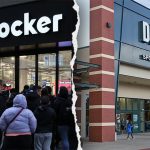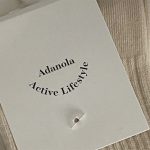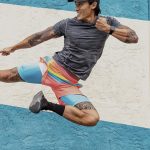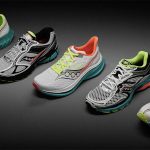While continuing to be rooted in performance and on-the-field product, Under Armour is looking to bring in more fashion to encourage people to wear its apparel for more casual purposes.
“It's almost part of the transformation of our brand where we are moving beyond just being a white, black, and navy blue sporting goods, compression shorts, and sport bra into something that not only the athlete wears to the gym, it's something they can wear to and from the gym after ” said company CEO Kevin Plank last week at the Goldman Sachs Retail Conference.
One step in that direction was the hiring earlier this year of Henry Stafford, formerly chief merchandising officer at American Eagle Outfitters, to run its apparel group. Stafford had “been living in what is going on in the mind and what's happening in the closet of a 17- and 18-year-old,” according to Plank, and is now exploring how to apply that knowledge to “some of the DNA which is Under Armour.”
Plank said it takes the right balance between performance and fashion.
“If fashion were on the right and performance were on the left, it's taking – not selling out – performance and start making a fashionable product. It's starting to say, 'How do we make performance more fashionable?' “
Nonetheless, Plank stressed that Under Armour would remain “authentic” to the core on-field athlete. Also, any more fashionable looks would include the performance aspects the brand is known for such as moisture management.
“We'll be on field and we'll have that big shirt with the left chest logo,” said Plank. “But we'll also have product that will be a little more subtle and probably a little more beginning to take them to the coffee shop.”
Overall, Plank said Under Armour's apparel business remains “healthy” across men's, youth, and women's.
Apparel grew 32% in the first half and the company has been making investments in replenishment systems to meet better-than-expected demand for its basic apparel.
A particular growth area is women's apparel, which is currently about 25% of Under Armour's business and has been “outpacing the growth of the balance of our business,” according to Plank. He said Under Armour is “fast becoming the number one women's apparel brand” in the sporting goods channel but is looking for other distribution channels, such as Nordstrom, to support its women's push. Bloomingdale's is also testing the brand’s women's product.
“We have the ability to be a little more thoughtful and sophisticated with finding places – not only driving with our current partners to get more women shopping there and thinking about it, but how can we be more thoughtful in showing up and appearing in places where women shop?,” said Plank.
“So, Nordstrom's has been a big driver for us,” he continued. “Bloomingdale's has been something that we've been in a test with – for us, as much learning how to be in that sophisticated environment.”
Regarding footwear, Plank said the category's infrastructure continues to grow. Under Armour had one factory partner when it launched cleats in 2006. It now works with seven over 15 different locations. In 2006, it had 14 people on its footwear team and now has 90 footwear-focused employees in Baltimore, 40 more in Asia, as well as offices in Guangzhou and Indonesia. Thirty requisitions for new hires are open in footwear, with nearly ten people waiting out non-compete clauses. He said it takes time to get all the new talent up to speed.
“For me to bring on new talent, it's three months to recruit someone, 12 months for a non-compete, six months for them to figure out which way is up when they get an understanding of the brand and the culture, and then an 18-month product calendar,” said Plank. “So a decision that I make today will not be impacted for probably another 2.5 to three years.”
Although the company is repositioning its footwear approach, Plank said the product in the market is selling through. “We don't have people canceling orders. We're actually moving forward,” he said.
But Plank admits the company is learning from mistakes in footwear. In running, for instance, the brand wasn't able to come out with youth for the launch, a demographic that had driven its training shoes' success. The basketball launch this October comes after 2.5 years of testing and securing nearly a dozen Division I basketball programs and more than 30 elite high school basketball teams. Plank said despite struggles in the category, footwear remains crucial to establishing Under Armour as one of the top global sports brands.
“A lot of this has been getting some of those pieces correct,” said Plank. “I think that when you enter markets, you enter with your strength, and I think what you're going to see from us from a footwear standpoint going forward is us finally figuring out how to leverage the strength that we have as an apparel company as well as we have as a great brand.”
Regarding its growing outlet business, Under Armour will end the year with 53 stores and has identified “a little more than 100 markets” that would be feasible for expansion, according to CFO Brad Dickerson. He said liquidation remains the core reason for the outlets, with only about 40% to 50% of the product sold at the outlets made specifically for that channel. Although customer response to outlets has been strong, Dickerson said UA remains careful about cannibalization issues.
Said Dickerson, “We are not cannibalizing. We're not taking this from anyplace else. It means for us being thoughtful and strategic about the sophistication of how we think about distribution going forward.”















